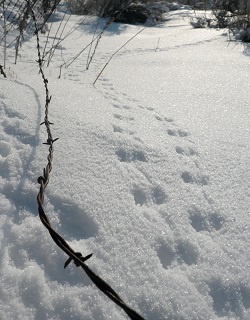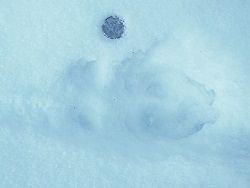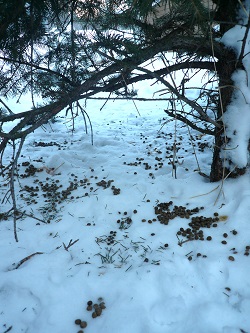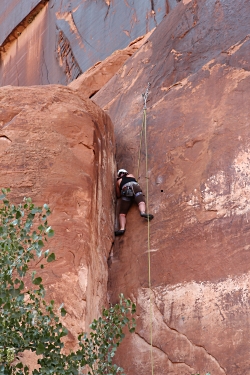
(now Deer Valley) in the 1940s
Visit Summit County as found on
Ilovehistory.utah.gov
Hi, this is Mark Larese-Casanova from the Utah Master Naturalist Program at Utah State University Extension.
Since the early pioneers, Utah’s mountains have been the basis of important industry and a source of great wealth. Some of Utah’s better-known mountain towns, such as Park City, were originally established as mining camps in the late 1800s. While some silver and gold mining still occurs in Utah, these days we find wealth in the form of another color- white. Snow, that is.
Skiing in Utah is so popular that people travel from around the world to ski here. We’re well known for our light, dry powder, and steep terrain. Each year, Utah’s fourteen ski resorts record several million skier day visits.
But, before skiing was a popular recreational activity, it was an important mode of transportation. For trappers, miners, and other early winter inhabitants of Utah’s mountains, travelling by skis was a means of survival. It was Norwegian immigrants who first brought skis to Utah, and one of the earliest records of skiing comes from the town of Alta, where, in 1870, the postman delivered mail to the town on skis. Ski touring grew in popularity, and the Wasatch Mountain Club routinely led multi-day trips in the 1910’s and ‘20’s. Professional ski jumping events, drawing thousands of spectators, began along the Wasatch foothills around 1930.
Until the Great Depression caused the value of silver to plummet, Alta was a boomtown for silver mining. The abundant snow was troublesome for the miners, and a giant avalanche destroyed half of the town in 1873. It wasn’t until the early 1930s that the mayor (and sole inhabitant of the town at the time) began exploring the idea of promoting skiing at Alta. After all, Alta holds the state record for highest average annual snowfall of 516 inches!
Alf Engen, a native Norwegian who came to Alta in 1935 as a foreman with the Civilian Conservation Corps reforestation effort, was instrumental in helping the US Forest Service select suitable areas for developing skiing. Modern skiing was established in Utah when cable tows started running at Brighton in 1937, and the Collins chairlift fired up at Alta in 1939 and offered rides for only 25 cents each, or $1.50 for the day. The next decade saw development of several other ski resorts, including Snowbasin and Beaver Mountain.
Utah’s ski resorts and backcountry continue to offer wonderful opportunities to enjoy the wintry outdoors with family and friends, to learn a new sport, and to take part in Utah’s rich skiing history. Oh, and for 5th and 6th graders around the state, Ski Utah offers Ski Passports that include three free lift tickets at each of Utah’s ski resorts.
For Wild About Utah, I’m Mark Larese-Casanova.
Credits:
Photo: Summit County on Ilovehistory.utah.gov
Text: Mark Larese-Casanova
Additional Reading:
Arave, J. Utah Skiing History. Utah Travel Center. https://utahtravelcenter.com/activities/skiing/utah_history.htm
Bowman, Anthony W., “From Silver to Skis: A History of Alta, Utah, and Little Cottonwood Canyon, 1847-1966” (1967). All Graduate Theses and Dissertations. Paper 1642. https://digitalcommons.usu.edu/etd/1642
Hullinger, J. Alf Engen. Utah History Encyclopedia. https://www.historytogo.utah.gov/people/alfengen.html
Notarianni, P.F. Mining. Utah History Encyclopedia. https://historytogo.utah.gov/utah_chapters/mining_and_railroads/mining.html
Utah Ski History FAQs. Alf Engen Ski Museum. https://www.engenmuseum.org/utah-ski-history-faqs





